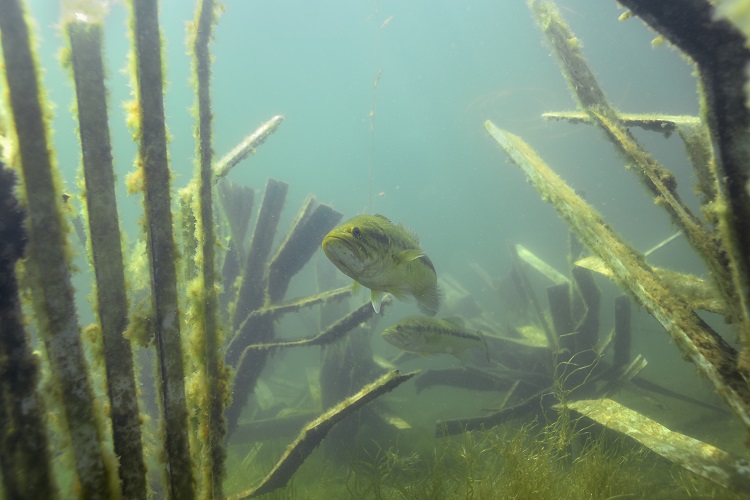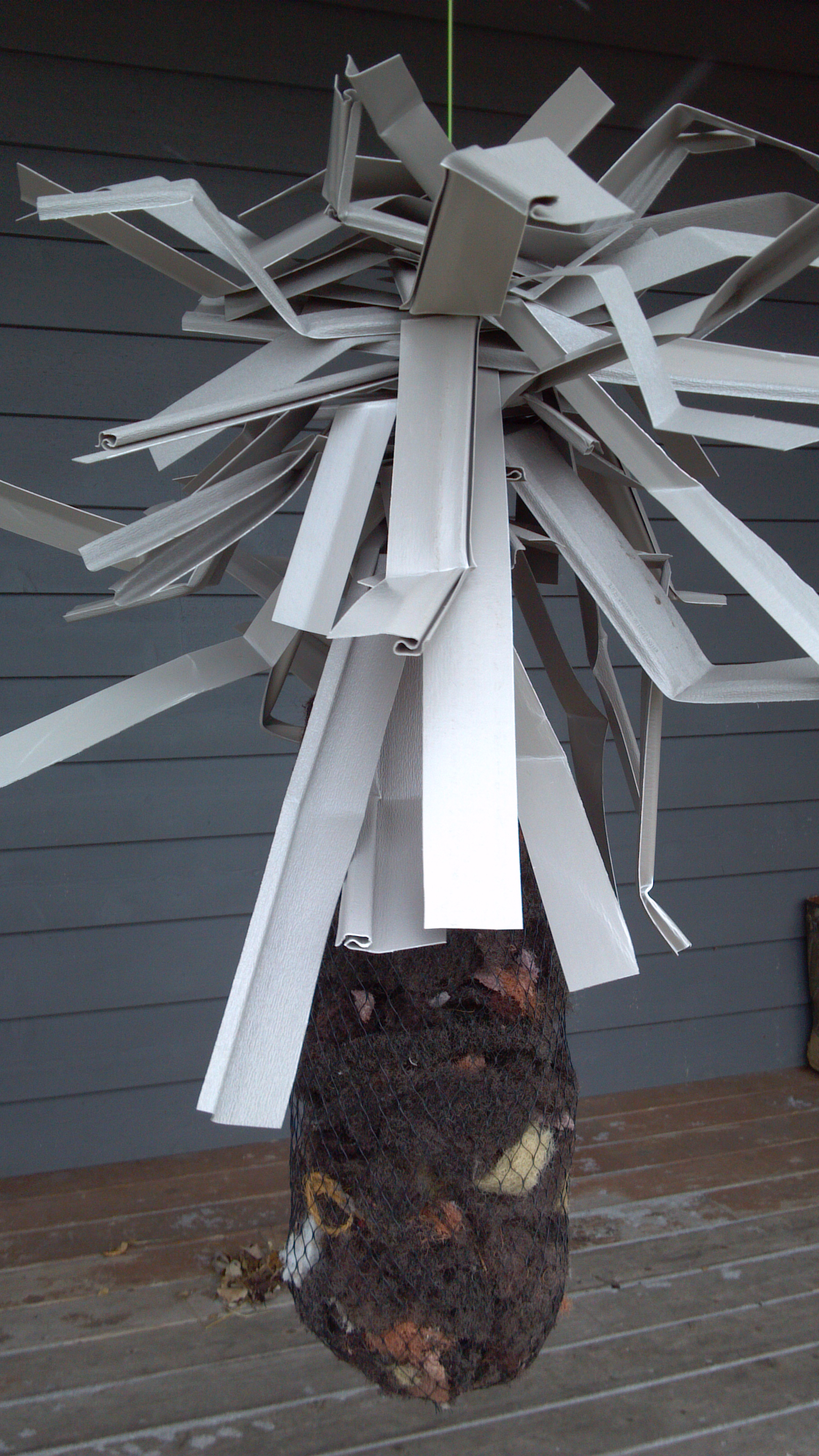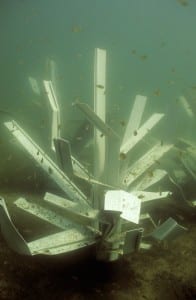Lake on the Brink:
The unexpected consequences of fighting Eurasian Watermilfoil
By Eric Engbretson
In 2012, Greg Matzke, a fisheries biologist for the Wisconsin Department of Natural Resources, made a startling discovery on Florence County’s Lake Ellwood. During a comprehensive fish survey which included spring, summer and fall netting and electrofishing surveys, Matzke discovered that all of the lake’s largemouth bass were older than 5 years of age, with approximately 91% of the largemouth bass population being at least seven years old. The absence of younger fish indicated a recruitment failure for a number of years. Such failures in largemouth bass recruitment over multiple years are unprecedented in the state of Wisconsin.
“The current largemouth bass population is in serious trouble,” Matzke reported. “It appears that natural reproduction of largemouth bass has not occurred since 2007. As these older/larger fish move through the population, a significant reduction in largemouth bass abundance will take place, with the potential for the complete loss of this species of fish unless the current situation changes.”
Matzke next began looking at the lake’s panfish population. What he found was stunning. Overall, the lake’s panfish abundance had fallen an estimated 75% in just the last 10 years, with bluegill and rock bass abundance down an estimated 65% and 89% respectively, showing that these populations also appear to be collapsing. Intense sampling throughout 2012 found only a single black crappie under six years of age, showing another alarming recruitment failure in several consecutive years. When Matzke analyzed the ages of Lake Ellwood’s northern pike population, the results were even more disappointing: There were no pike under the age of eight!
Matzke stared at the data he had collected. His department had never seen a mystery like the absolute and complete recruitment failures of native northern pike, black crappie, and largemouth bass (along with significant reductions in recruitment of other panfish populations). He shared his findings with other fisheries professionals across the state and they all said the same thing. They had never seen a collapse like this in their careers. Matzke and his team scrambled to collect more data and tried to find a cause that could have brought the fish to the brink of extirpation in Lake Ellwood. Surveys from 2002 had shown normal abundance, size structure, growth, and recruitment in all of these species. What had happened in the last ten years that was preventing fish from successfully reproducing?
The only thriving species of game fish in the lake were smallmouth bass. Their abundance and size structure had grown in the last decade and recruitment was high. This suggested that the problem was targeting specific species of fish. Because Lake Ellwood’s smallmouth bass were doing so well while the other species were collapsing, the focus turned to the lake’s historically sparse but important aquatic plant community. All the species showing recruitment failures are highly dependent on aquatic vegetation for spawning as well as cover and food for their young. Matzke observed that smallmouth bass seem to be different. “The fact that this species was not affected by the reduction in plant life,” he said, “is not a major surprise since as a species smallmouth bass are less dependent on aquatic vegetation.”
The Smoking Gun
Eurasian Water Milfoil was discovered in Lake Ellwood in 2002. Herbicide treatments began in 2003 and increased every year. By 2007 recruitment of northern pike, largemouth bass and black crappie had come to an end. “When I started to analyze the data it was strikingly obvious to me that there are some problems associated with the herbicide”, said Matzke. When he graphed the fish abundance (by year class) over the last decade and overlaid it with a graph showing yearly herbicide treatments, he found what he believed was a critical connection. Fish numbers fell as the amount of herbicide increased. Interestingly, in the year following a relatively low application of herbicide, young bluegill (and black crappie to a much smaller degree) began to appear again, but their numbers are still very low and they will likely disappear before they reach age 2.
Year class strength, indexed using age estimation to determine number of individuals of each year class captured during a 2012 comprehensive survey, for northern pike, black crappie, largemouth bass and bluegill plotted against the number of pounds of 2,4-D (not acid equivalent) used to treat aquatic plants in Lake Ellwood, Florence County, 2003-2012.
“We still wonder which stage of reproduction has failed in these species”, says Matzke. “Aquatic vegetation plays a major role in spawning site selection and in the survival of eggs and fry. Plants are also the source of primary production providing food and habitat for young fish and prey items, including invertebrates and minnows. It seems likely that one or all of these important phases of reproduction are dwindling in Lake Ellwood.”
On April 17, 2013 Matzke met with the Lake Ellwood Association to reveal his data and conclusions. He told the group, “The main cause for failed northern pike, largemouth bass and black crappie recruitment (along with the massive reduction in panfish abundance) appears to be the loss of aquatic vegetation.” The 2-4-D herbicide used on Eurasian watermilfoil had been successful in reducing the abundance of this invasive species significantly. Conversely, other native plants were also harmed by years of chemical treatment. Matzke said he has no reason to believe the chemicals have directly caused a failure in reproduction of any species of fish in Lake Ellwood. However, Matzke does believe that the chemicals have indirectly caused recruitment failure by eliminating too many of the aquatic plants young fish need in order to survive. Matzke has called for a change in the way the Lake Ellwood Association has been managing the lakes aquatic plants. He recommended that further chemical treatments for milfoil be stopped.
“First and foremost,” says Matzke, “we need to promote and strengthen aquatic vegetation in Lake Ellwood.” He stresses the role of aquatic vegetation in spawning and concludes that the loss of vegetation (including the invasive milfoil) has almost certainly wiped out a great deal of forage for young fish.
It seems that milfoil treatments controlled the invasive plant but also jeopardized the health of the lakes fishery. Today the lake contains a dwindling and rapidly aging population of largemouth bass, black crappie, northern pike, and bluegill. Matzke hopes the plants will come back in time for the remaining old fish to produce at least one year class before they die. If that doesn’t happen, many fish populations will likely be extirpated from Lake Ellwood. New fish can be stocked, of course, but the lake would lose the unique genetic lineage of the fish that have lived there for thousands of years.
The Future
Could chemical herbicide treatments for Eurasian watermilfoil be reducing fish recruitment in other lakes? None of the other lakes that have been receiving chemical treatments have had their fish populations surveyed this intensely. Large scale recruitment problems due to loss of important plant cover could be taking place throughout the region where the invasive plant is now being fought. There is no way to know if this is happening, and frankly, up until now, there has been no reason to find out. Fisheries experts around the state are only now learning of Matzke’s findings on Lake Ellwood. In the future, they will likely start paying more attention to fish recruitment on lakes treated for Eurasian watermilfoil which would allow the Department of Natural Resources to determine whether this crisis is an isolated instance or a more widespread problem.
In the meantime, it’s a race against time for Lake Ellwood’s native fish. The question remains: Will the plants come back in time to save these fish populations?















